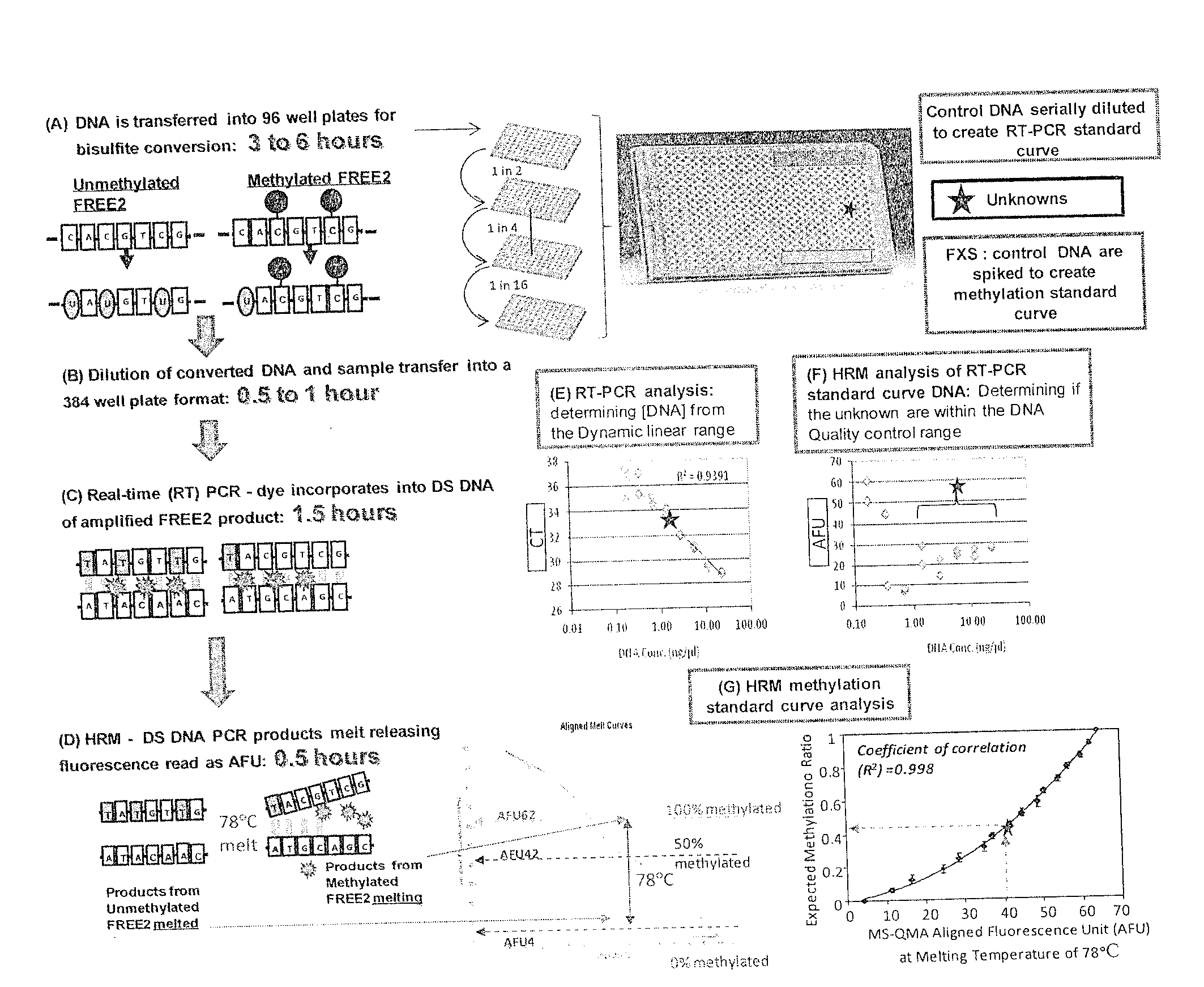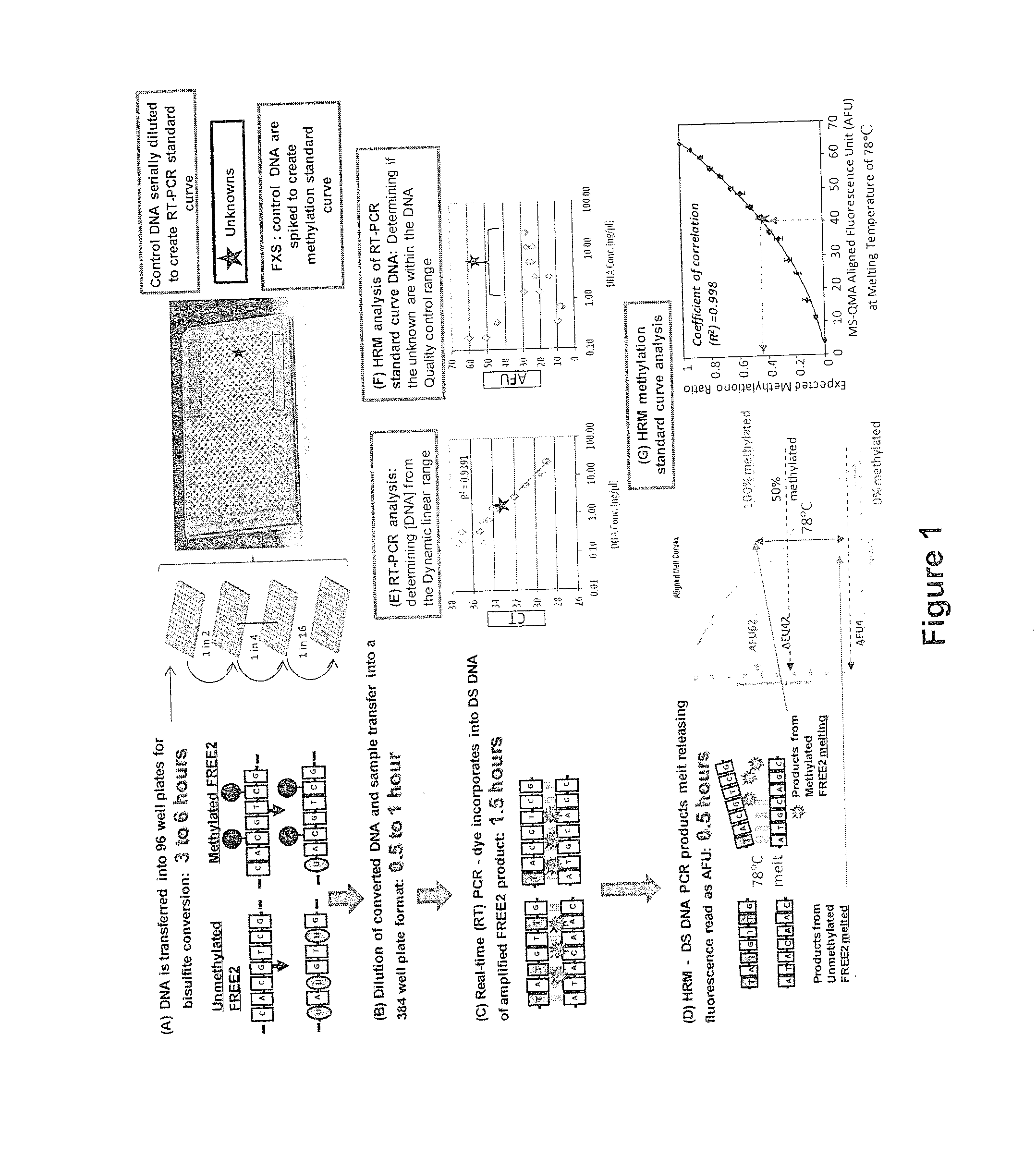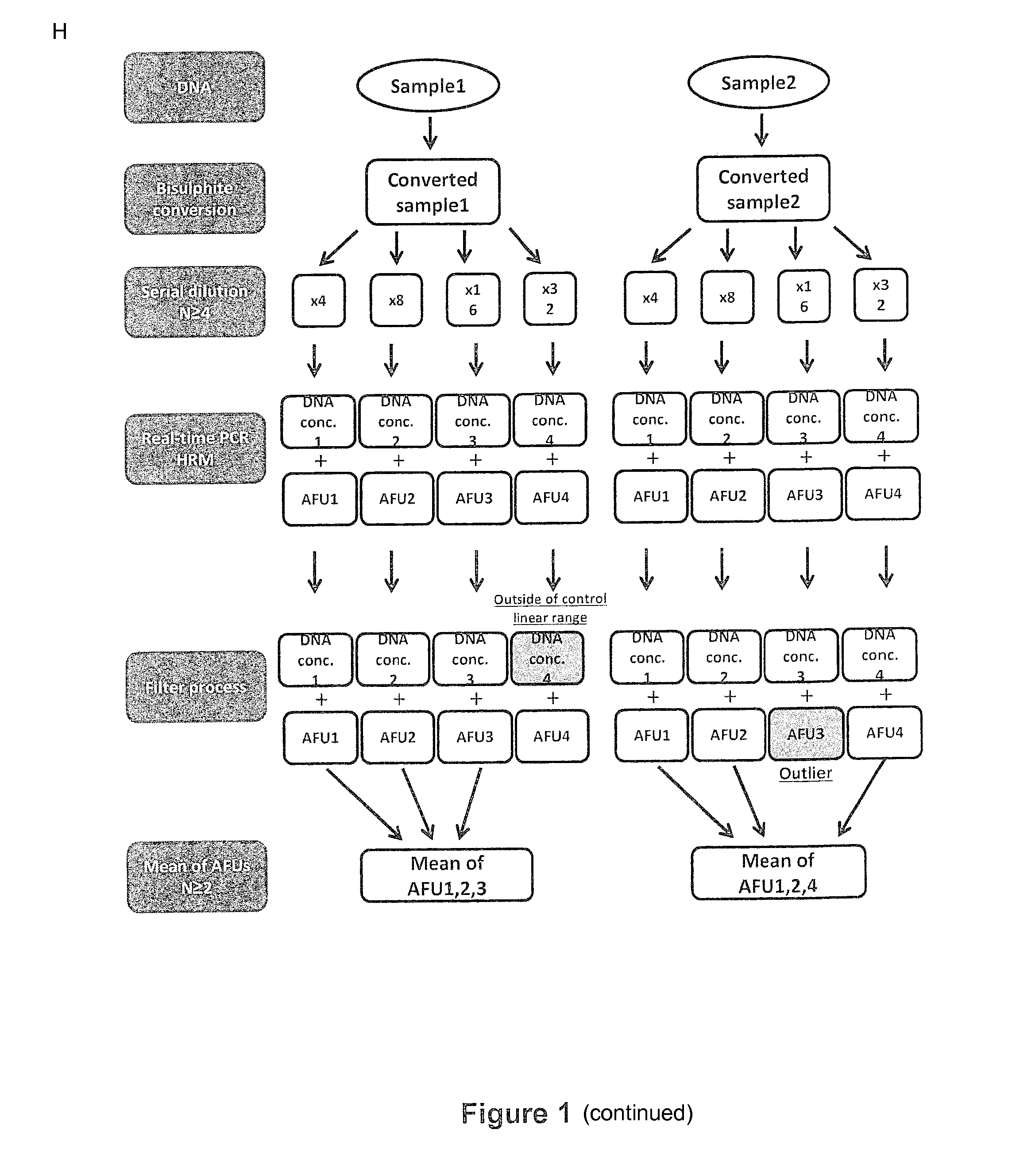An assay for quantitating the extent of methylation of a target site
a methylation and target site technology, applied in the direction of material analysis, biochemistry apparatus and processes, instruments, etc., can solve the problems of inability to accurately predict the prognostic value of the disease, the approach is time-consuming and low throughput, and the test results cannot be used to provide accurate prognostic information in both male and female carriers of the expanded allele on the type and severity of the disease. , to achieve the effect of significant diagnostic value and high throughput screening
- Summary
- Abstract
- Description
- Claims
- Application Information
AI Technical Summary
Benefits of technology
Problems solved by technology
Method used
Image
Examples
example 1
Methylation Specific-Quantitative Melt Analysis (MS-QMA) Protocol
Bisulfite Conversion and Sample Preparation:
[0323]The protocol is based on combined real-time PCR standard curve method and High Resolution Melt (HRM) Analysis of bisulfite converted DNA and is referred to as methylation specific-quantitative melt analysis (MS-QMA). The required input is either a 3 mm dried blood spot or DNA extracted from 0.3 to 1 ml of venous blood.
[0324]For newborn blood spots, one or two three-millimeter punches from each spot disk are collected into 96-well plates using the Wallac DBS Puncher (Perkin Elmer, MA, USA) and stored at room temperature until analysis. Each punch or set of punches is incubated in 55 μl of salt hybridization buffer for 15 minutes at 98° C. in a heat block for cell lysis, degradation of proteins and release of the DNA into the solution. After boiling, the samples are centrifuged and the supernatant transferred to a fresh 96-well plate. This extract is then treated with sod...
example 2
Development and Technical Validation of the FREE2 MS-QMA Assay
[0330]To assess the intra run variation and the ability of the assay to predict the expected methylation ratio (MR) 16 different spiking experiments were performed. A temperature of 78° C. was identified as the lowest temperature at which all unmethylated alleles are completely melted, at which point no further fluorescence is emitted. At this temperature, the 100% methylated alleles are actively melting, and emitting fluorescence. A reliable method with the lowest inter and intra run variation (two standard deviations) and the lowest detection limit (LOD of 0.02 MR) used the AFUs from the aligned fluorescence curves at 78° C. This produced a correlation coefficient of 0.998 for the High Resolution Melt (HRM) standard curve representing the relationship between AFU at 78° C. and the expected methylation ratio in the spiked samples.
[0331]MS-QMA analysis was performed in FIG. 2(ii) in 138 females previously examined for the...
example 3
Follow-Up Testing of Identified Cryptic FM Individuals Using Reference Methods
[0335]To confirm the cryptic FM status, the samples identified as positive using MS-QMA are re-tested using CGG sizing PCR, methylation-sensitive Southern blot and MALDI-TOF MS FREE2 analysis as described in earlier publications (Godler et al. (2010) supra; Godler et al. (2012) supra). Briefly, processing of ‘positive’ DNA samples and the assessment of the size of CGG repeat from the extracted DNA (with precision of + / −one repeat) are conducted using a fully validated PCR amplification assay (Khaniani et al. (2008) Mol Cytogenet 1:5). CGG repeat sizing and methylation of the FMR1 CpG island restriction sites of all positive samples are also performed using a methylation sensitive Southern Blot procedure with appropriate normal and abnormal controls, as previously described (Godler et al. (2010) supra; Tassone et al. (2008) J Mol Diagn 10:43-49). Briefly, EcoRI and NruI digestion is performed on 7 to 9 μg o...
PUM
| Property | Measurement | Unit |
|---|---|---|
| Fraction | aaaaa | aaaaa |
| Electric charge | aaaaa | aaaaa |
| Current | aaaaa | aaaaa |
Abstract
Description
Claims
Application Information
 Login to View More
Login to View More - R&D
- Intellectual Property
- Life Sciences
- Materials
- Tech Scout
- Unparalleled Data Quality
- Higher Quality Content
- 60% Fewer Hallucinations
Browse by: Latest US Patents, China's latest patents, Technical Efficacy Thesaurus, Application Domain, Technology Topic, Popular Technical Reports.
© 2025 PatSnap. All rights reserved.Legal|Privacy policy|Modern Slavery Act Transparency Statement|Sitemap|About US| Contact US: help@patsnap.com



